After an incredible day in Gary, Indiana exploring the abandoned Palace Theater, City Methodist Church and other awesome abandoned places, I set out to see the ruins of Kingsbury Ordnance Plant.
I stopped at a gas station just outside the city of La Porte. In an icy tone, the cashier asked for my credit card and drivers license to hold while I pumped my gas. I was surprised, but shrugged it off and filled up my tank. When I came back in, she was all smiles and explained that she was being extra careful because she'd never seen me before. The other cashier asked why I was visiting La Porte of all places and then started dancing around behind the counter. We shared a laugh and I got back on the road.
The remains of Kingsbury Ordnance Plant are spread out over a huge rural area with a small population, so I doubted I would run into anyone during my visit. I was very wrong.
Some of the old buildings have been sold to private companies. A security guard working for a chemical company approached me to make sure I wasn't snapping photos of the plant. I assured him I was only there to look at the historic buildings and he seemed satisfied. Still I decided to leave the area so I wouldn't cause undue concern.
Navigating the old ammunition factory was challenging because there are no signs to indicate what or where anything is. I relied mostly on satellite images.
I found an area where dozens of identical bunkers lay spaced out in rows like houses in a subdivision. Grass covered the sloped roofs and trees grew atop many of them. They seemed to be empty, but I couldn't be sure. It would have taken a very long time to peek inside each of them to find out.
Some of Kingsbury's old structures were fenced off or sealed up.
Others had collapsed to little more than foundations with rows of bare concrete walls.
I wandered around, occasionally managing to get a peek inside.
A few buildings still contained relics left behind when the plant closed.
As I made my way back to the car, a man in a white pickup pulled over and asked if I was parked nearby. He told me that a guy who was leasing the property had called the cops because he didn't recognize my car.
Police had already arrived at my car by the time I got there. I told them I was only there to take pictures of the old buildings and didn't mean to cause any trouble. Apparently I had driven past a No Trespassing sign without realizing it. After running my license and seeing that I had a clean record, the police said I was free to go. I apologized for the inconvenience and headed back out on the road.
Needless to say, if you're thinking about exploring Kingsbury Ordnance plant, keep an eye out for No Trespassing signs. It's also be a good idea to contact local law enforcement and ask which areas are okay to explore. They will appreciate it.
After France fell to Hitler's forces in 1940, the US began gearing up for war. The Department of War commissioned the construction of 73 ammunition manufacturing facilities across the United States.
LaPorte County, Indiana was deemed a prime location because the land was relatively flat and had plentiful well water. It was far enough inland to avoid enemy attacks, but well positioned near highways and railroads so that product could be easily transported to the East and West coasts. The area was also far enough from any major city that an accidental explosion was unlikely to cause much harm.
Buildings were spaced apart so that if an explosion did occur, the surrounding structures would not be damaged. Fortunately, there were never any major accidents.
Two hundred and fifty families had to relocate to make room for the ordnance plant. They were given 30 days notice and paid what was deemed fair value for their land.
The government purchased a total of 13,454 acres and quickly began construction.
Workers were recruited from the surrounding areas. Many came from the city of Gary because Kingsbury offered higher wages than workers typically earned at US Steel.
To accommodate an expected 10,000 workers in a community that only had a population of 16,000, The War Department built thousands of homes, trailers and dormitories just outside the factory. The new settlement was dubbed Kingsford Heights.
By May of 1942, employment at Kingsbury Ordnance Plant had swelled to a high of 20,785, about half of whom were women. For many it was their first job outside of the home.Inspired by Rosie the Riveter, the plant adopted "Tillie the TNT Girl" as a mascot.
Kingsbury closed at the end of World War II, but reopened in 1951 after the US entered the Korean War. It ceased operations permanently in 1959.
A portion of the land has been converted into Kingsbury State Fish and Wildlife Area and another segment is now Kingsbury Industrial Park.
Redevelopment of the area has been slow due to the fact that waste from the ammunition plant still exists on the land and cleanup is expensive.
Future plans include a new rail yard, the restoration of old railroad tracks and extension of existing lines. The railway will connect Kingsbury with facilities in Florida and across the Midwest, facilitating the distribution of produce and other farm goods. In March 2017, the LaPorte County government took control of the project with the hope of bringing in new developers.
From Kingsbury, I made my way to Niles, Michigan to see an old hydroelectric dam that wouldn't be around for much longer.
Thank you for checking out this article. If you enjoyed it, please share it on Facebook.
To receive an email announcement whenever I post a new article, please subscribe to Places That Were.
Until then, feel free to read my previous posts about the incredible places I explored on my Epic Rust Belt Road Trip.
I have many more photos of Kingsbury Ordnance Plant than I was able to include here. I'll be sharing them on social media, so please follow the links below if you'd like to see more of this incredible abandoned place.
Facebook: http://www.facebook.com/placesthatwere
Instagram: http://instagram.com/theplacesthatwere
Twitter: https://twitter.com/placesthatwere/
Tumblr: http://placesthatwere.tumblr.com/
Google+: https://plus.google.com/u/0/+JimSullivanPlacesThatWere/posts
EyeEm: https://www.eyeem.com/u/placesthatwere
Youtube: https://www.youtube.com/jimplicit
500px: https://500px.com/placesthatwere
Thank you!

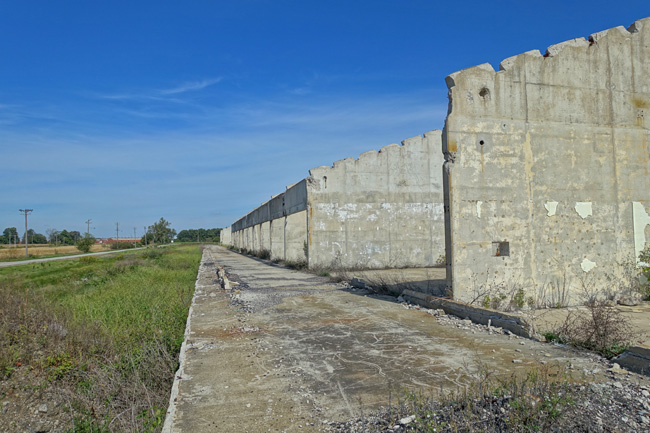
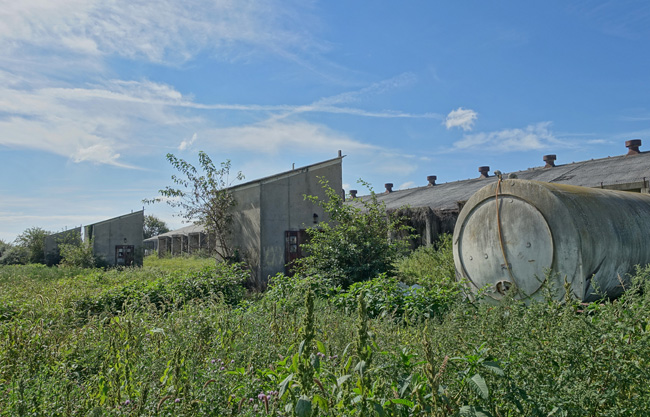


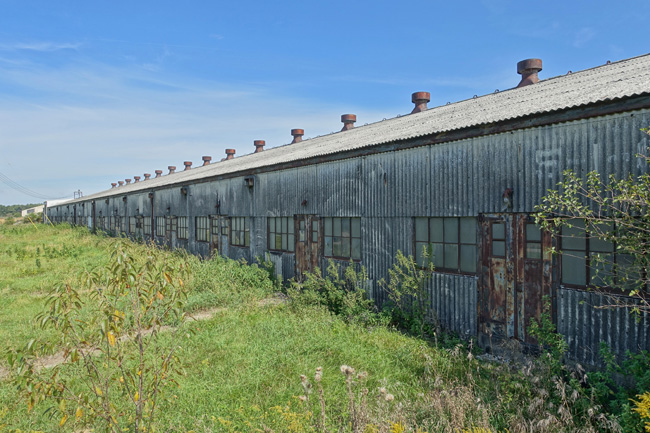

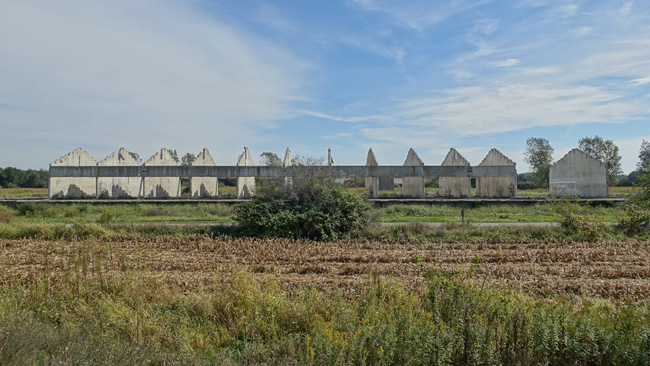


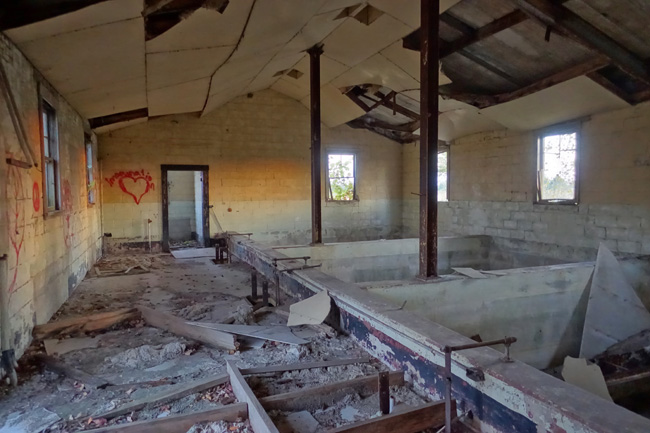


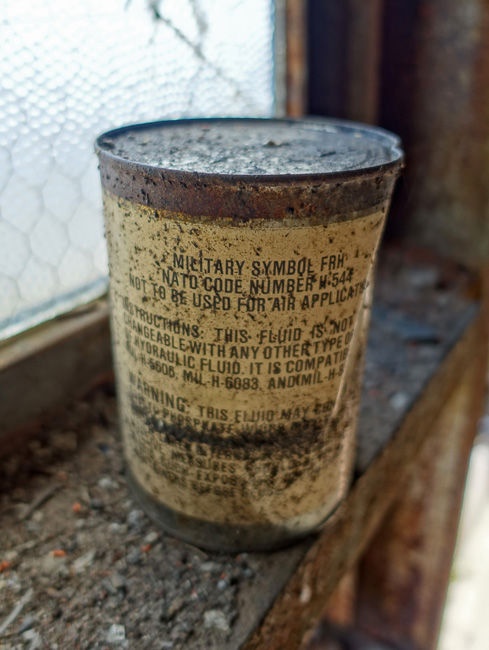








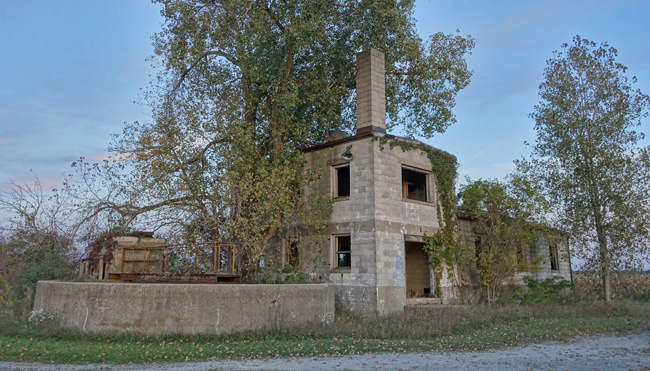

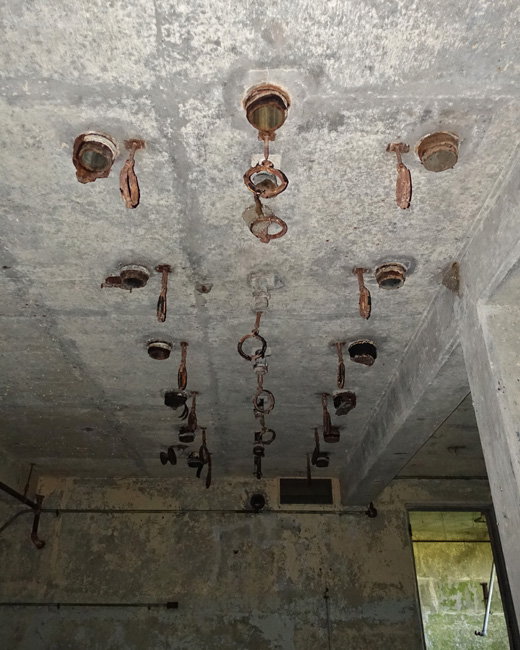
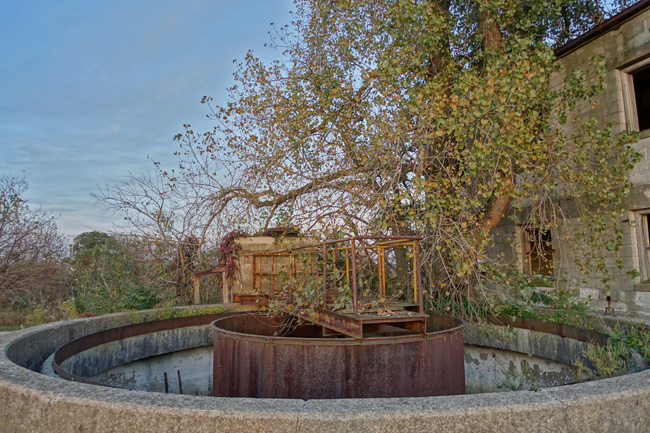



Very interesting! I am enjoying following your explorations.
ReplyDeleteThank you! I'm glad you're enjoying!
DeleteMy parents worked at the plant and we lived in Kingsford Heights most of our lives. I am in touch with a lot of what I call The Kingsford Heights Brat Pack. We were all close friends in our own little world. I love the pics and info. KARON RISNER GARRISON
DeleteI remember when are school , in the heights, burn down and going to school there until a new school was built. I was born in la Porte in 1953. My mother talk about working there a using a " something " size shell as a head rest during breaks.
DeleteGreat article. I've always read that ammo plants and other government "war" properties are highly polluted. I've seen many converted to wildlife refuges. I think that could be good.......and bad.
ReplyDeleteThanks, Sue. I've heard that too. I believe that's why Treasure Island in San Francisco Bay hasn't been developed. That land is probably worth a fortune, except that it's so heavily polluted from the military base. I certainly wouldn't mind seeing more wildlife refuges.
DeleteI hope while in Niles you were able to see the old rail yard. Truly a neat place. It still has the old round table.
DeleteI didn't know about the rail yard, but it sounds amazing. Hopefully I'll get a chance to see it next time I'm in the area. Thank you!
DeleteMy Dad worked on Treasure Island in the early 60's. He was an electronic technician in the Navy, and worked at an TV station there on Treasure Island. Wasn't any TV shows, just programs or classes like.
DeleteLove seeing your travels - - so many places that people never hear of - - await every posting with anticipation of where you are now and what interesting place will I see today.
ReplyDeleteThank you so much! It's great to know you're enjoying my posts.
DeleteLet's see; the government built it, but won't help clean it up. No wonder the locals are a but testy.
ReplyDeleteAgreed.
DeleteThe locals made a lot of money from the place while it was open, and now they want to make more money by putting it to other uses. They should certainly pay part of the cost of clean-up.
DeleteThe military has a very limited amount of money to use for cleaning up obsolete former sites like this. Every dollar they spend on cleaning up "contamination" --- most of which is minor --- is a dollar less to be spent on training troops and providing them with the necessary equipment.
Turning sites like this into wildlife preserves makes far more sense than spending billions to provide podunk towns with speakling-clean subsidized industrial parks or subdivisions that --- history has shown, repeatedly --- will never be occupied or prduce the jobs and revenue that the development boosters enthusiastically claim (while lining their own pockets).
Because of short-sighted clearing, clean-up and redevelopment of munitions sites like this, in 2004 the US found itself so desperately short of basic military necessities like rifle and artillery ammunition that we had to buy rifle ammo from factories all around the world, and use 45-50 year old artillery shells and propelling charges. That places American soldiers' lives at risk.
It is a very interesting place, however venture into the wrong location and your liable to encounter the authorities! They seem very suspicious of everyone when out there. Kind of makes a person wonder if there isnt some kind of nefarious activity going on out there?
DeleteNever have had encountered LE there.
DeleteI had two aunts, who lived in Gary, who worked there in WWII.
I actually grew up in the city of LaPorte which is maybe 15 minutes tops away for KOP. We often went out there as teens. The biggest problem out there is there are mines in several locations that were never found, contaminated soil, ammunitions, buried containers of god only knows what. And the US Army still owns a section of that land. Some of it has been sold off, some has been turned into a wildlife/ hunting area. Its a neat place but when the Army decided not to clean it there was no chance of the area ever being able to be reestablished. The contamination isn't minor and I understand money needs to be spend wisely but to call a whole area "Podunk" because its not some big city you know doesn't mean it isn't affecting surrounding cities. I doubt if we ever were in need that the county of LaPorte would be so accommodating next time after being left with the headache they have now...
DeleteThe thought of the US military not having enough money is laughable. They "lose" trillions of dollars.
DeleteIve hiked into the 'military' owned area a few times, there used to be some non fenced sections you could get through. Doesnt seem like a standard military area, but there are surveillance cameras around all entrances. Got caught once- we went up to the bunkers in daylight (dumb). They are out in the open and you have to cover a decent bit of ground before you can get back to the woods. 2 blacked out suvs and a white van that looked exactly like what you would expect an FBI surveillance van to look like rolled up on us in a hurry. They threatening to have us arrested but I just played it off like we were hiking in kop and got lost.
DeleteTo be fair we didnt hop any fences!
Ive also heard rumors there is an underground section around those bunkers but havent seen any evidence of that.
The paranoia and misinformation some people are posting here is laughable. No, the military DOES NOT have an infinite supply of money -- and certainly not enough to waste on cleaning up minor contamination in every Podunk WW II-era facility. Sorry if it hurts your feelings, but the contamination there IS minor, and the location IS Podunk. Turning most of it into a wildlife reserve is a far better idea than throwing billions of dollars into a hunt for every speck of spilled artillery propellant or flake of lead paint -- the former ordnance plant worker who wrote about a lack of modern munitions was 100% correct. When I was in Iraq we were so short of ammunition that we were using rifle ammunition loaded in Colombia and Brazil because the US plants couldn't produce enough. We were using .50 caliber ammunition made in 1944! 155mm artillery shells made in the 1960s and the same with the propelling charges.
DeleteShortsighted and simply greedy small-town governments and chambers of commerce agitated to turn Ordnance plants like KOP into 'redevelopment' boondoggles that would line their own pockets rather than keep the plants in mothballs to be available in a time of national need.
And as far as the silliness about 'mines'? Get serious. The US most assuredly DID NOT set up minefields around Ordnance plants. At best they built low-quality barbed wire fences -- barely adequate to keep out stray cows -- and hired a handful of civilian security officers (armed with such fearsome weapons as .38 revolvers like Barney Fife carried -- usually empty at that) to drive around the perimeter a few times a day.
Great pics! Grew up there, was going to say Kingsford hts. was originally called Victory City. There is a lot more info in town if you decide to go back
ReplyDeleteActually that place was polluted by the Fisher-Calo company storing nasty stuff there in rusting 55 gallon drums.
ReplyDeleteThey had a huge fire and the newscopter from Chicago came down to cover it.
Phil? Gomez was the reporter NBC 5 IIRC and I got to ride over the site while it was engulfed and the barrels were exploding as they were taking video.
After that the the Super Fund Federal cleanup contractors came in and dug up all the soil, incinerated it and spread it back out.
They told me nothing would grow there for years.
And nothing did. .....for years.
I got to visit most of the factories that set up shop in the industrial park while I serviced office equipment.
The walls that are standing were built so that if there was an explosion it could be contained to an isolated section and not take out the entire building.
The biggest building in the pictures with the "tower" looking structures on top was occupied for many years by the U S Army Reserve Transportation Company until they built a new facility with an entrance near the South Jct of hwy US 6 and 35.
Boise Cascade had a distribution warehouse there for kitchen cabinets they made.
Th storage bunkers all in a row after row after row were later converted into mushroom farms for Campbell's soup.
Way back in the Eastern edge of the property is a huge cannon that they fired utility poles out of to test the explosives used for projectiles.
A fireworks company was still operating back there as recently as a couple years ago
One person I went to high school with was there one night stealing copper wire from utility poles when he got into some that were still hot.
He lost several front teeth in the process.
But it didn't kill him.
I forget his name.
What is now a subdivision close to Hwy 35 used to be the officers housing.
Some very nice homes in there now in private hands.
The little berg of Kingsford Heights is what is left of some of the other housing that was built to house many of the employees.
I flew over that area a lot and got to see buildings come and go change from the air.
Amazing. Thank you for all the great information! That chemical fire must have been incredible to witness. I'm glad things have begun to grow there again after the pollution was cleaned up.
DeleteI'm trying to imagine all those mushrooms growing inside the rows of bunkers. It seems like a brilliant use for the buildings. It must be so interesting to fly over this area.
Thank u for the additional info.
DeleteI remember the fire as we lived between Walkerton and the plant. We had things fall off of the shelves because of the explosions. We drove up HW 6 to go to our favorite fruit stand a bit past the intersection of HW 6 and HW 35. There was a sheriff deputy that insisted we didn't go further than this as it was he said a Paint Plant and those drums contained cyanide and I quote him: "If those blow, it's going to be death for all for several miles!".
DeleteWe went home and watched the explosions in the distance (about 4 miles away from us) blowing over the top treelines through the night.
My Grandmother was a time-keeper at the plant in the 40's and my grandpa made sandwiches -- later he opened a dixy creme donut shop in LaPorte in the 60's-70's.
Wow, Andy. That must have been incredibly exciting and scary! What a great story. Thanks for sharing!
DeleteThe guy that was stealing copper wire and was bitten by a hot one's first name was probably Vern. The doctors said that he died while falling but the impact with the ground kicked his heart into gear. An imbecile.
DeleteI've been a resident of La Porte for several years now, but my in-laws grew up in Kingsford Heights. In my effort to collect information about family history, I've been reading up on the town's history and find the articles and these comments and clarifications so very interesting!
DeleteSeems like an incredibly rude place asking to hold your license and credit card while you pump gas just because they haven't seen you before. What nonsense. My wife is from LaPorte but I guarantee that if anyone treated me so disrespectfully I'd leave and find another place to get gas.
ReplyDeleteLet alone having your credit card AND your driver's license . No wonder she was dancing. Hope you checked your statement, Jim. ��
DeleteI definitely checked my statement and there has been no suspicious activity. I guess she really was just being extra careful.
DeleteWhy wouldn’t a person use the card reader at the pump to pay? This saves time and would have prevented this rude encounter?
DeleteAs someone who grew up in LaPorte city and worked at a gas station after graduating high school for a little bit I can say this is a very common practice. If you are not paying at the pump or coming in and prepaying they will ask to hold your card and ID until your done to avoid pump and runs that happen way to often. You have to think about how weird it is to see someone who has a card but does not use the card reader at the pump but plans to pay for their gas with a card.
DeleteThey didn't give me the option to pay at the pump.
DeleteI grew up in Kingsford Heights. As a kid in the 70's and 80's we used to go out there and explore. What you got pics of, the buildings werent that bad when I was a kid. They alot of times put up those no trespassing cause they done want people to get hurt. There was alot of land mines out there. We used to hear them blowing up cause animal would step on one. We were always told to stay out of there. But not many of use listened.
ReplyDeleteIt sounds like you had a lot of fun there as a kid. I would have too. It must have been a real shock hearing the mines going off unexpectedly.
DeleteThere weren't any "land mines." The Army never placed land mines around ordnance plants, then or now.
DeleteI grew up in the "circle" of houses in KOP. We were one of the original buyers when Cotton's sold them. I remember playing in those buildings and yes they weren't as bad but they were still close to what they look like now. I remember we had to go through a little guard building to get in. There was a fully assembled cow's skeleton laying there. lol Added to the adventure we all were having. Anyway back then we saw the cigarette lighters (brass, everything was brass) still on the walls and many other things still there. I wish now I'd have taken pictures, but heck I was only 10 back then. It sure was a great place to live, no other homes were there but the originals and we were all a great group of kids who never lacked for an adventure living there. Thank you so much for the memories!
DeleteI also remember playing in the woods. They were immense and there was never a lack of spots for a fort or treehouse. I remember a group of 5 or 7 of us kids were playing by the big tank where the reserves were. We finally got caught and they asked what we were doing? We told them we were having an adventure. lol Some guys took us all around to see things, and then they lifted us up on the tank and even started it. That's when we had to go because I think someone high up made them quit and told us to go home. So many fun great kid times.
DeleteWhat a fun story! That's so cool that the reserves showed you around and let you sit on the tank!
DeleteI remember back in the day I lived at kingsbury campground for 2 weeks and on 2 seperate occasions I heard a loud bang in the middle of the night. I had asked one of the rangers around there about it and they said it was probably some animal accidentally found an old landmine out there. That is why they have some areas fenced off with danger signs on them.
ReplyDeleteIt's amazing that there was still so much live ammo lying around. Sounds like an exciting camping trip!
DeleteThere were never any 'landmines' out there. The US military NEVER laid minefields around Ordnance plants. Fenced off areas might have some unexploded munitions that were scattered during testing or while being destroyed due to be out-of-spec or damaged, but it's just as likely (or even more likely) that there are far more mundane hazards like open pits, collapsing sewers, etc, than anything explosive.
DeleteThere is a Shooting Range still open to the public there, we use it from time to time. I think there is also still a banquet hall that can be rented for weddings and events.
ReplyDeleteCheers Banquet Hall. It's for sale now and has been closed for a year or two.
DeleteThere were some people at the shooting range while I was in the area. It seems like it would be a fun place to fire off a few rounds.
DeleteMy husband and I go out there frequently to shoot. We also go into the preserve to fish
DeleteMy grandmother worked there during the war. She was so proud to be part of the war effort. It was her first job, and then she never stopped working, switching to a hospital after the plant closed. I've been to events at the rentable Hall there, and have driven through it when near, sometimes using the public restroom at the firing range. There are areas that large toxic metal drums (semi-truck size)are buried in the ground. So my family has said they will probably never use that land for a subdivision. Eerie and sad seeing all the abandonment.
ReplyDeleteIt must have been an exciting time for your grandmother and a lot of other people to be directly involved in the war effort. It's disturbing to think of those drums of chemicals sitting underground. It's only a matter of time before they rupture and empty into the water table.
Deletewhen i was a kid i worked at several factories in the 70's.it would be nice if you could of found some pictures of the plant in its operating days
ReplyDeleteI grew up in Kingsford Heights and when they were in the process of fencing of the area for the game reserve, they hired several young boys to string fence and dig holes for fence posts. My older brother was one of those young boys. On several occasions, he would come home and tell us about finding unexploded shells while digging holes for fence posts. Every time they found one, they had to call in someone from the military to detonate them or collect them to detonate later. I remember hearing explosions from there on several occasions.
ReplyDeleteSounds like a dangerous job. Your parents must have been worried about him getting hurt. But it's a good thing they fenced the area off.
DeleteI worked building those fences one year while in high school (La Porte). They gave a bunch of kids a jeep and materials, and turned us loose. We did work hard, though. We fenced off a lot of area and put up the no trespassing signs. I think the biggest concern, as I recall, was unexploded ordinance, although likely mines as well. Of course, being dumb high school kids, we took the jeep out across some of the areas we were fencing off. Never hit anything, thank goodness.
DeleteI also worked there one summer sealing the bottom of Civil Defense drinking water cans. The large warehouses were stacked to the ceiling with 5-gallon cans. We took from one stack, sealed the cans, and created a new stack.
Jim, that must have been an exciting time for you. I'm glad you didn't have any mishaps!
DeleteThank you for sharing this. Great job. I think you were lucky to be able to take these pictures. This would be a great history article for the SB Tribune, if allowed.
ReplyDeleteThank you so much! I do feel very fortunate that I was able to visit Kingsbury and capture shots of it.
DeleteThat gas station is all alone out in the middle of a buch of fields. People drive off without paying all the time plus it has been robbed several times. They have learned to be cautious. They have good reason for their behavior and procedure.
ReplyDeleteBRAVO ZULU aka well done. Will visit.
ReplyDeleteWorked there back in the early 80s. Ireco Chemicals, which was an explosives manufacturer. One of those concrete bunkers had all the dirt removed so it could be converted into a production facility. (I worked the docks moving finished product to and from several other bunkers.) The actual bunker was shaped like a big quanset hut. (Curved walls being most able to resist damage from bombs.) They were then covered with dirt and had grass and trees growing on them to make them difficult to see from planes. Yes, very cool area.
ReplyDeleteThanks for the info, Tom. It's so neat to hear the many ways these old structures were repurposed after the ordnance plant was closed. I like how the trees and grass were planted on top of the bunkers. I wonder if the tree roots ever caused any structural damage.
DeleteThe arched "igloo" magazines weren't designed to resist bombs. They were designed to direct the blast of an accidental explosion upwards, to minimize the chance of damage to other magazines and anyone working in the area. The earth covering was to provide insulation --- heat is bad for ammunition, and so is repeated hot-cold cycles --- and to help contain any accidental blast and fragmentation.
DeleteThe trees weren't planted. Their roots cause damage, and in event of a brushfire they provide extra fuel that could damage the contents of the "igloos." When the plant was active, the fire department or facilities maintenance people would have cut down any trees growing within 50 yards of each igloo, and the grass would have been kept short by grazing livestock. The vents on the top rear of the igloos and in the doors to the igloos were fitted with weighted louvers that were held open by a soldered link, so that if a brushfire got close the solder would melt and the louvers would slam shut.
DeleteMany of those 'bunkers' were storage for ammo produced at the plant.
DeleteBack in 1963/1964 my dad worked at Jet Stream Rubber company were they made tires. On the weekends he would take a bunch of us neighborhood kids from Kingsbury over there so we could slide down the old fire escape chutes. They were curved and fun to slide on. He usually went down first to make sure it was safe. We would have to climb stairs to the second floor to use them and one time there were tires at the bottom of the chute and we would bounce back up a way. Cheap fun entertainment.
ReplyDeleteSounds like a lot of fun!
DeleteWhen Jim Cotton owned the industrial park, i used to go out there to a horse barn and help take care of the horses. i learned how to drive when i was 13 driving around the empty roads out there, this article brought back so many memories, thank you
ReplyDeleteThanks for sharing your memories. It does seem like a great area to learn to drive. Not a lot of traffic there and plenty of road.
DeleteDave S???
DeleteI lived in Laporte county for over 60 years and have alot of insight and information about the facility. There is a tunnel that is still in existence that runs from one end of the plant to the other - east and west. This I was in back in the 70's. we actually took a VW bug into it. Jim, if you want more info email me and I will be happy to share. neilg32degree@yahoo.com
ReplyDeleteThank you! I didn't know about the tunnels. I wonder if they are still accessible at all. Amazing that you were able to drive a car into it!
DeleteIf you ever go to Kingsford Heights there is still homes that were built for the workers at the industrial plant in the town. The library also has information about the industrial plant and how it all got connected to Kingsford Heights. I grew up in the heights and recently went to a informational speech about the plant and the heights.
ReplyDeleteThank you for the info!
Deletei worked there in the industral area there for 27 years for alexander chemical corplots of history there in that industral area.
ReplyDeleteThanks for posting this! My husband was there today and wondered what it had been. Now we know!
ReplyDeleteGreat blog!
Thanks Heather! I'm glad you enjoyed it. I hope he had a great time in Kingsbury!
DeleteMy mother worked there during the war—right out of high school. She and her sister, along with a few other girls from southern Illinois went there to work in 1943-45. My mom was an inspector—lived in barracks as she described them. She is 91 now, and will enjoy seeing some of these pictures. Thank you.
ReplyDeleteMy parents moved us to Kingsford Heights after WWII at the encouragement of mom's brother who lived there (last name Keenan). He told them you could buy a house there for $1,975. Dad worked at Studebaker in South Bend as a welder, and mom worked at the Kingsbury Ordnance Plant after it opened. Every few months there would be a more serious than usual discussion between mom and dad after supper. Some 40 years later when mom and I were talking about those years I asked her what those discussions were about. She said every so often there would be an accidental explosion at the ordnance plant and people would get hurt, and she and dad would talk about whether she should continue to work there or not.
ReplyDeleteA group of us used to play paintball in one of the buildings back by the shooting range. The company operating next door to it had it torn down though.
ReplyDeleteLa Porte native here... The large building with the tower was the Employment Office and was designed by John Lloyd Wright, Frank's son. Here's a short article on KOP from Indiana Landmarks:
ReplyDeletehttps://www.indianalandmarks.org/2018/06/exploring-cold-war-landmarks-in-northwest-indiana/
There is a similar facility at Illiopolis, IL just east of Springfield, IL just north of I74
ReplyDeleteMy grandmother, who was 35 in 1940, ended up working at the Kingsbury Ordinance Plant. My dad, who was 19 in 1942, was drafted by the Navy, while he was an employee at the plant. I never knew what defense plant they worked at until I found my dad's draft card on Ancestry.com. Thank you for writing this and including photos. I'm a bit of an historical geographer myself.
ReplyDeleteI grew up here. That little white manufactured home to the left with the chain link fence was my childhood home. We didn't really have neighbors except for the banquet hall nextdoor. I have explored a ton of this area as a kid and teenager. It's creepy and super cool.
ReplyDeleteMy family lived in Kingsford Heights in 1944/45 while my Dad worked at KOP as a steam fitter in the maintenance department, he did NOT work on the ammo assembly line. I was only 8 years old but still remember our address in Kingsford Heights; it was 389 Chatfield Road. We had a 3-BR, 2BA single family house. Most of the homes were 2-BR, 1BA. The homes were all identical and it was very easy to get lost because all the homes looked exactly alike. I seem to recall my Dad telling me that the rent was $45 per month. You could only rent one of these if you worked for Todd & Brown at KOP. There was NO natural gas, so all the homes had a "coal bin" just outside the kitchen door. A Fairbanks-Morse furnace was in the kitchen which also was the water heater. The cookstove was fueled by kerosene. The schools were not built when we moved into our new house, so we had to continue going to Union Mills to school which was about 5 or 6 miles away. We had to furnish our own transportation to and from school. Dad had purchased a new 1941 Chevy 2-door right before Pearl Harbor was bombed. We had an "A" Card which allowed us to purchase 15 Gallons of gasoline a week as gasoline was rationed, as was everything else. There were lots of kids my age that lived in KH, so I had plenty of buddies, and everybody's Dad or Mom (or both) worked at the KOP.
ReplyDeleteWe lived at 444 Grenway. Think it was 1948 or 1949. Lived there until I got married and moved to Knox.
DeleteI remember the coal bin.
DeleteIt looks like their are some buildings that have been buried. Is that true or just my imagination walking thru there?
ReplyDeleteI grew up in the Heights. I was about 7 or 8. At night I could hear loud noises like bombs going off. It terrified me because I thought we were going to be bombed. This was during the Korean war. To this day I don't sleep well at night. I became a critical nurse and always worked 12 hour midnight shifts. Just saw a program on SCIHD about KOP. Didn't know it was that large.
ReplyDeleteWhat would it take to clean the place up and build villas? What needs to be done? Bring in fresh clean dirt once building are gone. I may have someone coming that possibly can help financially.
ReplyDeleteThis is where I grew up. My boyhood house was the modest white manufactured home on the left with the chain link fence. Except for the banquet facility next door, we didn't have many neighbors. As a child and teenager, I spent a lot of time exploring this area. It's both spooky and cool.
ReplyDeleteIf you ever visit Kingsford Heights, you may still see the residences that were erected for the workers of the town's industrial plant. The library also offers information on the industrial site and how it became associated with Kingsford Heights. I grew up in the heights and recently attended an educational presentation about the plant and the heights.
ReplyDeleteI absolutely loved this discussion! I'm 76 years old, lived in LaPorte in the 40's and 60's. Went to St. Peter's and LaPorte high school (both old and new). Lived on Kingsport Ave, Fox St. Bluff St. and Pine Lake Ave. Learned more history about La Porte in this discussion. Surprised there has been no comments about Allis Chalmers(sp). Thank you so much. My Uncle was Mayor of La Porte for many years.
ReplyDeleteI was born there in 47.
DeleteMy grandfather was employed there. Never knew about the weapons of war produced there.
I was in "nam" in 65 ..don't know why to this day.
This is a nice blog. Thank you for sharing. advanceappliance.ca
ReplyDeleteMy grandfather worked at the plant during WW2 as he was too old for the military at the time and too young to do nothing for the war effort. My mom was about 5-7 years old at the time. She reported living in a prefab house that was on farm land. She also said the farmer's wife made doll clothes for her doll. I'd appreciate any information anyone might have about what the homes looked like or the relationship between the farmers who originally owned the land and the factory workers. I've read that the land owners tried to stop the sale of the land to the US military. I'd also appreciate any information anyone might have about the types of jobs men did at the plant. I'm working on writing a short story about my grandfather, that's not specifically about the work he did at the plant, but it would be helpful for background.
ReplyDelete